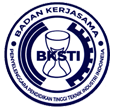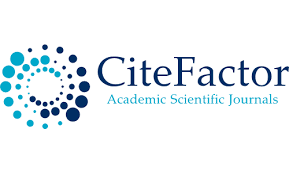Analysis of Worker’s Age and Working Time on the Influence of Productivity with Multiple Linear Regression Methods (Case Study of Automotive Spare Parts Manufacturing Company)
Abstract
Keywords
Full Text:
PDFReferences
Aprilyanti, s. (2017). The effect of age and
years of service on work productivity (case study: pt. Oasis water international palembang branch). Journal of industrial systems and management, 1, 68–72.
Arifin, m. Z., & parmariza, y. (2021).
Organizational commitment based on the effect of workload on organizational commitment. Scientific journal of management and business, 121–134. http://dx.doi.org/10.22441/teropong.v10i3.16787
Assauri, s. (2014). Operational strategic lean
opeartional process. Rajagrafindo persada.
Azizah, f. N., & rinaldi, d. N. (2022). Effort to
improve overall equipment effectiveness performance with six big losses analysis in the packaging industry pt bmj. Indonesian journal of industrial engineering & management, 3(1).
Desmizar, d. (2021). The effect of profitability
and investment opportunity sets on dividend policy in infrastructure, utility and transportation sector companies listed on the idx in 2017-2019. Journal of economic and social sciences, 10 nomor 3, 281–296.
Fahmi, i. (2014). Business feasibility study and
investment decision. Mitra wacana media.
Ghozali, h. I. (2018). Multivariate analysis
application with ibm spss 25 program. Diponegoro university publishing agency.
Kumbadewi, l. S., Suwendra, I. W., & Susila,
G. P. A. J. (2021). Effect of age, work experience, wages, technology and work environment on employee productivity. E-journal of ganesha university of education, 9 no.1, 1–9.
Mardiatmoko, g. (2020). The importance of the
classic assumption test in multiple linear regression analysis (case study of allometric equations of young kenarium [canarium indicum l.]). Barekeng journal of mathematical and applied sciences, 14, 333–342. https://doi.org/10.30598/barekengvol14iss3pp333-342
Prabowo, r. F., & aisyah, s. (2020). Poka-yoke
method implementation in industries: a systematic literature review. Ijiem (indonesian journal of industrial engineering & management), vol 1,no 1, 12–24.
Rista, n., aprilina, v., & baryanto, s. (2022). E-
commerce, self assessment system, tax knowledge and automatic exchange of information on tax avoidance intentions. Scientific journal of management and business, volume 8, no. 2, 191–202.
Sarjono, s., gofur, m., & hernadewita, h.
(2023). Increasing the productivity of the seal production process by improving layout (relayout), kaizen and lean at pt. Xyz. Metrik serial teknologi dan sains (e), 4(1), 16–23.
Sarjono, s., & supratman, j. (2021).
Meminimasi waste pada proses pembuatan oil seal dengan pendekatan lean manufacturing (studi kasus proses produksi oil seal line sim di pt. Nok indonesia). Kocenin serial konferensi (e) issn: 2746-7112, 1, 2–11.
Sunarto, n. (2020). The influence of attitude,
subjective norm and perspected behavioral control on purchase intention (case study of breadtalk). Jurnal swot, volume x, no 3, 326–344.
Syukron, a., & kholil, m. (2012). Six sigma
quality for business improvemet. Graha ilmu.
Ukkas, i. (2017). Factors influencing labor
productivity for small industry in palopo city. Journal of islamic education management, 2, 187–198. Https://doi.org/doi: https://doi.org/10.24256/kelola.v2i2.440
DOI: http://dx.doi.org/10.22441/ijiem.v4i2.20019
Refbacks
- There are currently no refbacks.

This work is licensed under a Creative Commons Attribution-NonCommercial 4.0 International License.
IJIEM - Indonesian Journal of Industrial Engineering & Management
Program Pascasarjana Magister Teknik Industri Universitas Mercu Buana
Kampus Menteng - Gedung Tedja Buana, Floor 4th
Jl. Menteng Raya No. 29 Jakarta Pusat- Indonesia
Tlp.: +62 21 31935454 Fax: +62 21 31934474
http://publikasi.mercubuana.ac.id/index.php/ijiem
Email: [email protected]

This work is licensed under a Creative Commons Attribution-NonCommercial 4.0 International License.
The journal is indexed by:





1.png)
.png)
.png)
.png)







